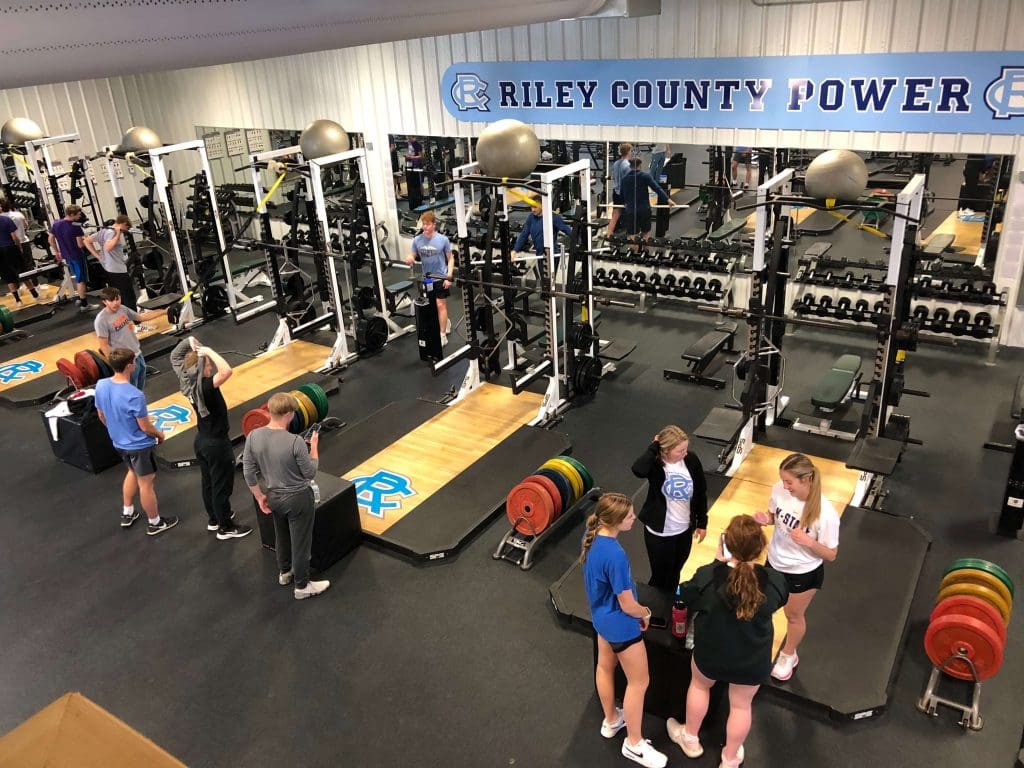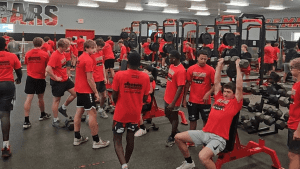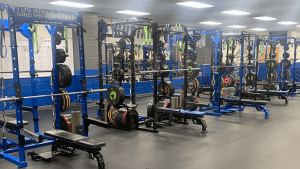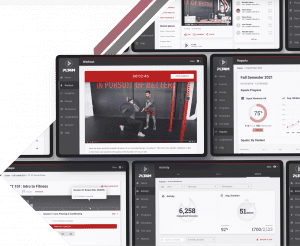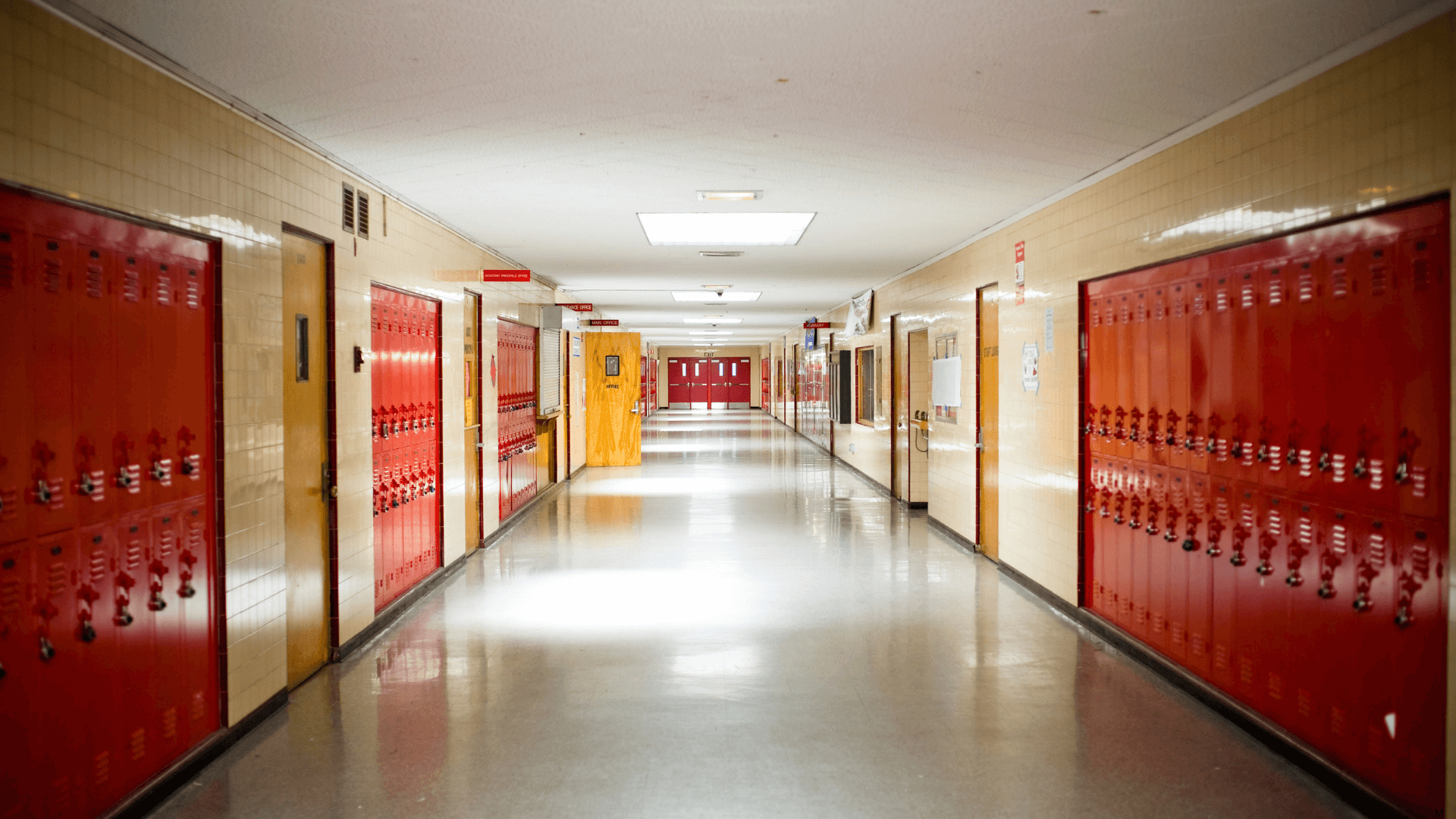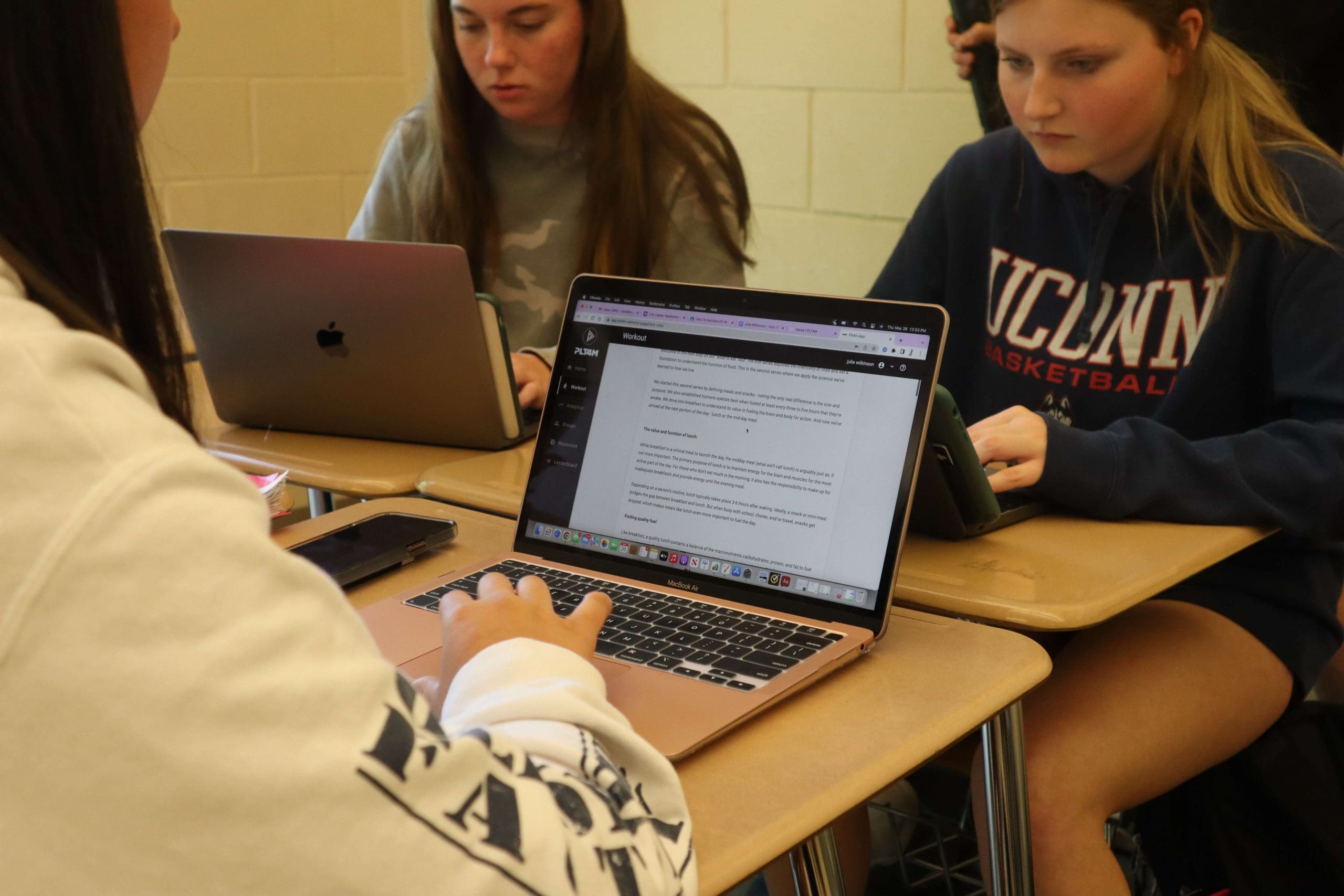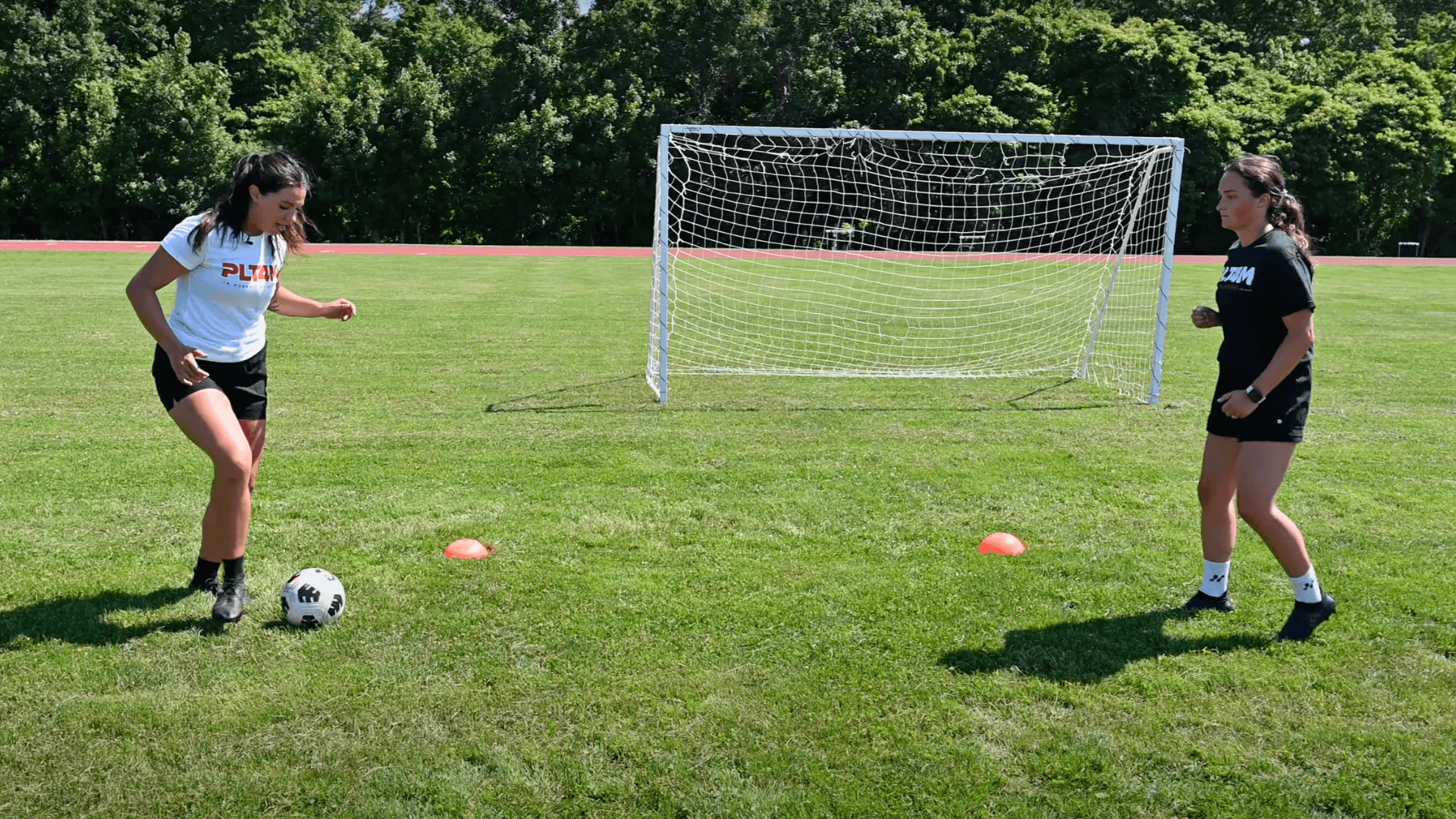School districts are investing and prioritizing athletic PE, especially at the high school level. Check out the rising tide of athletic PE, examples from schools across the country, and how your school can take steps to add more athletic physical education classes!
Physical Education Program Offerings Are Changing!
In recent years, much attention has been placed on the changing perspective and approach to physical education classes. As a result, what was once considered a class for athletically gifted students to succeed and others to feel embarrassed, has gotten a new look.
Now, a quality physical education program offers a wide range of physical activity options like pickleball, yoga, dance, and other lifetime fitness activities. The goal is to support every student on a personal fitness, health, and wellness journey. And at PLT4M, we have been a part of that mission and believe in creating different fitness opportunities for all.
But with that said, we don’t want to forget about serving a large population of student athletes in the world of physical education. A recent survey found that more than 7.6 million students participate in high school sports. That means half of all high school students in the United States participate in sports!
But even though high school students are involved in physical activity through sports, they should still participate in physical education courses throughout the school year. But with rising rates of PE exemption for athletes and lowering credit requirements for graduation, many high school student athletes are losing out on the power of PE.
But with athletic PE, there is an opportunity to complement the athletic department while also growing the physical education program at your school.
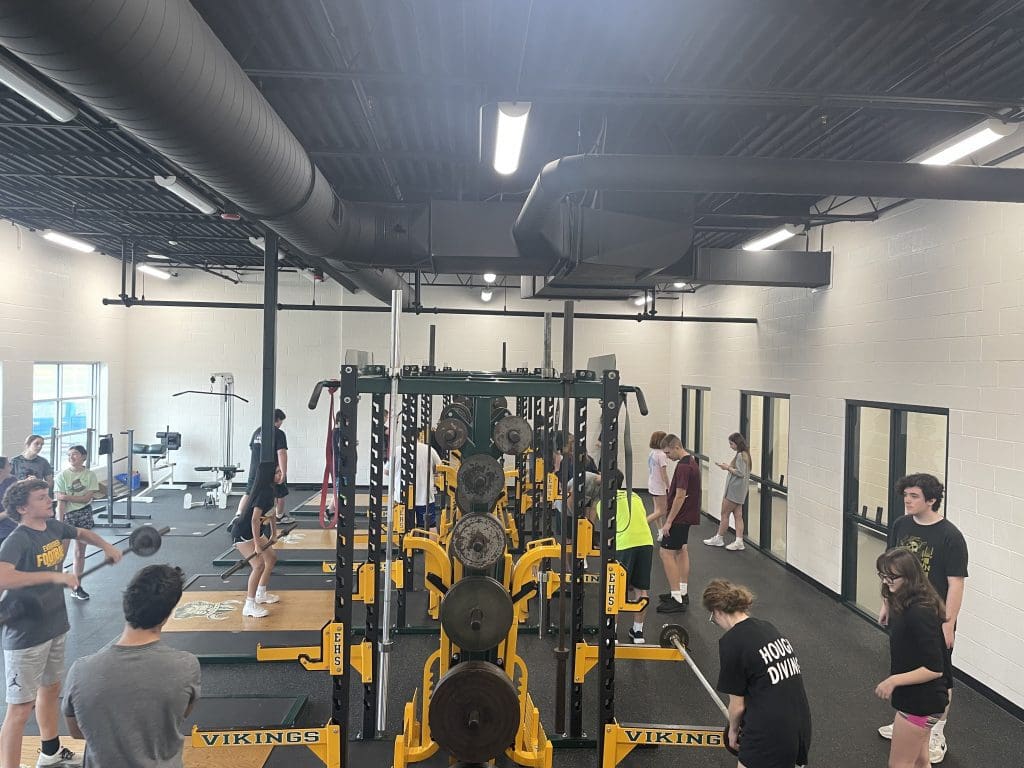
Defining Athletic PE
At most schools, the physical education department and athletic department have many overlapping goals and initiatives. As a result, many high schools offer some type of athletic PE. While these physical education classes are often labeled differently based on the school district (weightlifting, S&C, athletic performance), there is an overarching theme of what we call athletic PE.
Athletic PE is an opportunity for student athletes to participate in a comprehensive strength and conditioning program during physical education classes.
No matter what a school district calls this class, student athletes can participate in all aspects of sports performance training like weightlifting, speed and agility training, and recovery workouts. Better yet, they can do so as part of the physical education program.
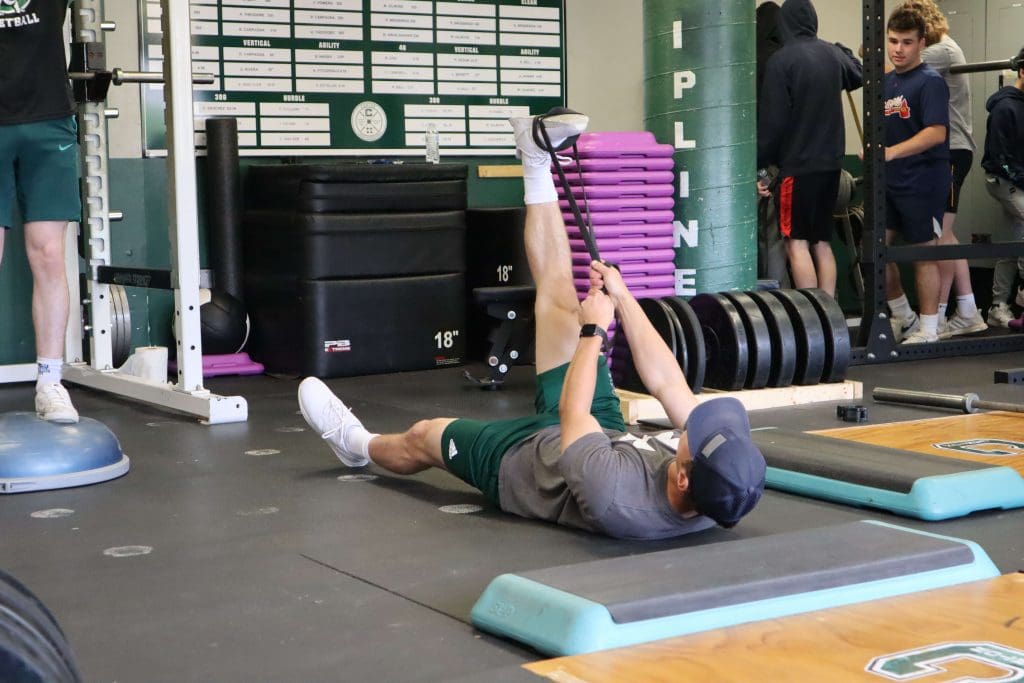
Benefits of Athletic PE
In many school districts, the weight room and strength and conditioning are limited to one or two specific sports (typically football). But with athletic PE, every high school student athlete, male and female, has a chance to participate in a strength and conditioning program.
As a result, student athletes will see immediate benefits in their specific sports. But more importantly, students will develop a wide range of skills that they will have well beyond their athletic careers. Students who participate in athletic physical education will be able to safely and confidently workout at home, at a local gym, or anywhere else for the rest of their lives.
In addition to the benefits for students, there are many advantages to athletic PE for physical education programs and athletic departments. The athletic department can ensure a consistent and quality strength and conditioning program through athletic PE. Moreover, the physical education department can keep the large population of student athletes interested and engaged in class while not just rolling out the dodgeball or basketball.
Free Download!
The Ultimate Guide to High School S&C
Learn how to navigate the many logistical challenges that face high school coaches, and get insights into how to program effective workouts.
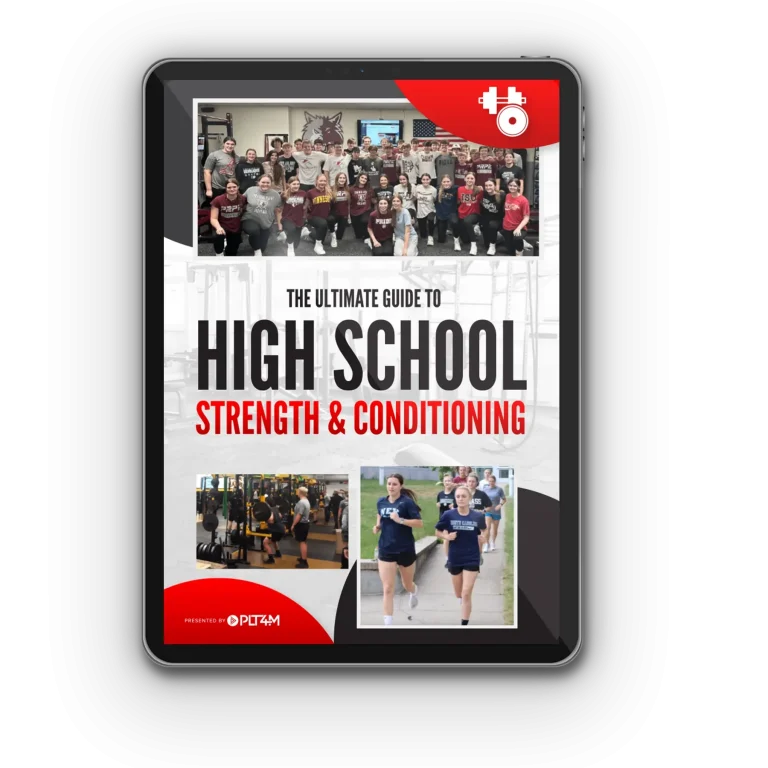
Athletic Physical Education Classes In Action
Athletic PE is not a new concept. Many school districts have a well-established athletic PE offering and have a large population of students taking advantage of these courses.
For example, at Owensboro High School in Kentucky, the physical education program offers six sections of an athletic PE class they call “strength and conditioning.” Working together, the athletic department, athletic director, sports coaches, guidance office, and physical education teachers can get almost 80% of student-athletes into the class.
From there, student athletes can complete either in-season or off-season training programs during the physical education class. Blake Roberts, the PE teacher and strength coach in charge of the class, says it has helped to not only improve specific sports success on the field but also build confidence off of it,
“We have student athletes really take their game in their specific sports to the next level because of this class. It has also been a powerful way to build students’ confidence, especially our female students.”
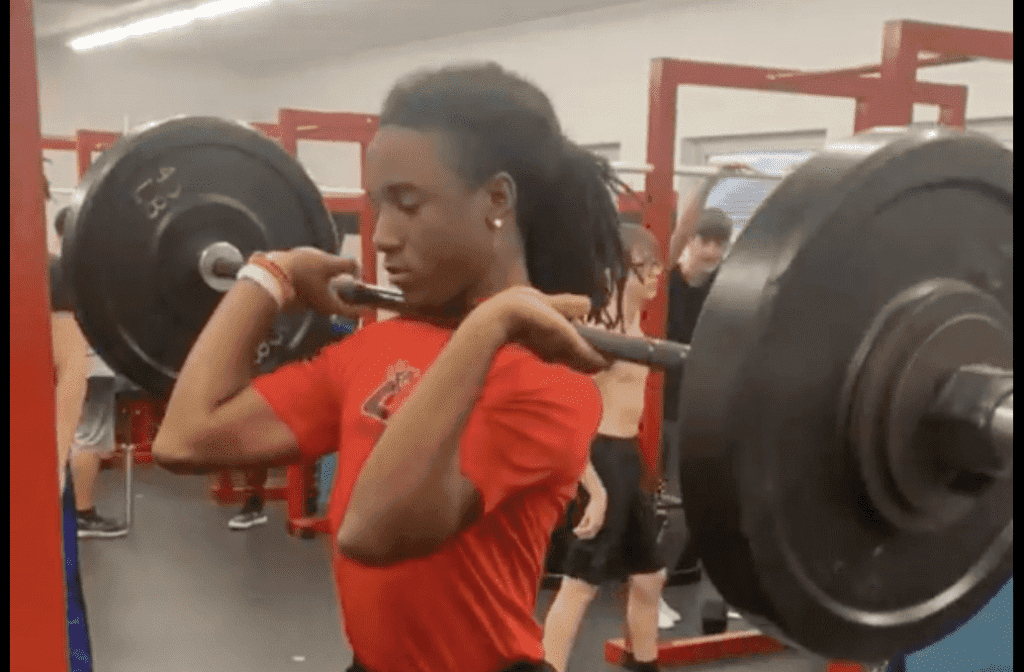
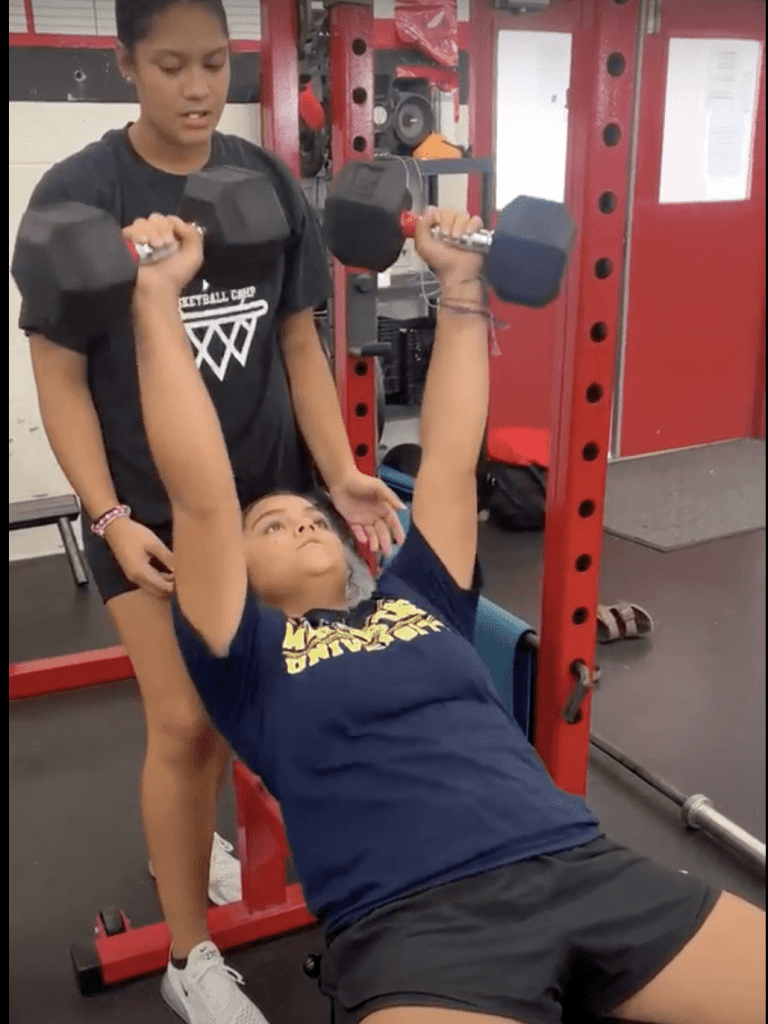
And while Owensboro High School is just one example of athletic PE in action, school districts all across the country are seeing the power of athletic physical education classes. Check out other stories and spotlights from across the country:
Technology’s Role In Athletic PE
At most schools, athletic physical education classes are open to all upperclassmen students. This means that students arrive to class with a wide range of experiences and needs. As a result, physical education teachers must manage this mixed bag of students and often turn to technology to personalize workouts.
On top of the need for personalization, many sports coaches look to gain insights and data into what is going on during the school day in class. To be able to share and track student data and information across PE (grades) and athletics (accountability), school districts often look for technology to help with a unified athletic PE approach.
To help with athletic PE, strength and conditioning, and general PE classes, over 1500 schools utilize PLT4M.
Ready to Learn More?
Schedule a free 10 minute consultation to see how the PLT4M system can help save you time, and empower student learning!
Key Takeaways on Athletic Physical Education Classes
No matter what state or school district you are in, there is a case to be made for offering athletic PE. As school districts search for ways to actively engage a diverse range of students, they can address a large population of student-athletes through athletic physical education.
While athletic PE is typically offered to high school students (10th-12th grade), there are steps also to consider before arriving to this class. Many schools successfully adopt an athletic physical education class by starting students at the middle school and 9th-grade level. This can be in the form of foundational fitness lessons or an introductory weightlifting unit. By introducing every student to the basics early, more students are likely to take the class and enjoy it as they get into the later year of high school.
